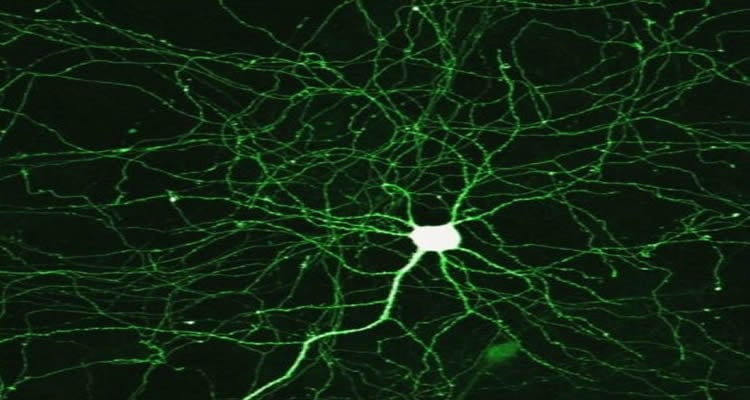TAU researchers find neural networks preserve memories better than individual neurons.
To compensate for erratic shifts and spikes in its neuronal communications, the brain relies on the stabilizing mechanism called “homeostasis” — the ability to maintain relatively stable equilibrium between different elements of its composition — to preserve overall network function. Disruptions in stability cause disorders such as epilepsy, but precious little is known about this macro-level regulatory phenomenon.
A new study published in eLife by Dr. Inna Slutsky of Tel Aviv University’s Sackler Faculty of Medicine and TAU’s Sagol School of Neuroscience finds that homeostatic regulation occurs mainly in groups of neurons rather than in the individual neurons themselves. Contradicting established assumptions, Edden Slomowitz and Boaz Styr, doctoral students in Dr. Slutsky’s laboratory, discovered that single brain cells, on an individual basis, were unable to autonomously stabilize “spikes” in neuron communication over long periods. “Spikes” or “firing,” as they are also known, are neurons’ response to stimulation; they relay messages to the rest of the body.
“Neurological and psychiatric disorders often see similar or overlapping neurological symptoms, and the failure of the neuronal homeostatic system may lead to these common endpoints,” said Dr. Slutsky. “Understanding the principles and mechanisms involved in neuronal homeostasis may lead to new approaches in the treatment of these and other brain disorders like Alzheimer’s disease.”
Seeking stability in a constantly changing environment
The brain’s ability to adapt to a constantly changing environment and to form and store memories is due to the extreme flexibility, or plasticity, of its neural network. But the extreme plasticity of the brain also makes it inherently prone to instability and subsequent illnesses and disorders.
“Through homeostasis, organisms are able to maintain a stable internal environment,” said Slomowitz. “One common example is the secretion of insulin in response to a meal to keep blood sugar levels within the normal range. While there was evidence to support the theory that there were homeostatic mechanisms at work in the brain to stabilize neuronal activity, it was unclear which precise properties were regulated.”
For the purpose of the study, Slomowitz grew a neural network on an array of electrodes and recorded the activity of single individual neurons in the network. He then applied a drug which severely inhibited neural activity. In collaboration with Prof. Eli Nelken of Hebrew University and Dr. Michael Slutsky of Mantis Vision, Slomowitz found that the network returned to its original firing rate over the course of two days despite the continued presence of the drug — and even though the firing rates and patterns of individual neurons did not reflect homeostatic tendencies.

“These results were unexpected and contradicted the current dogma in the field stating that individual neurons can regulate their own firing rates in an autonomous manner,” said Dr. Slutsky.
The trade-off of population stability
Following up, Styr repeated the experiment in the lab using calcium imaging, which can monitor the activity of visually identifiable neurons. The calcium images revealed similar results, bolstering the conclusion that homeostasis occurs at the level of neuron populations, not on a cell-by-cell basis.
The team also examined the ability of the network to differentiate between low- and high-frequency spikes, a capability critical for short-term memory. They found this detection was severely compromised two days after the introduction of the drug, even though network firing rates and patterns had been homeostatically restored.
“Our study demonstrates that neurons in a neural network act synergistically in order to keep the population spiking rates and patterns in a constant physiological range,” said Dr. Slutsky. “This may occur at the cost of a diminished ability to form new memories, a process which may underlie the loss of short-term memory observed in brain diseases such as Alzheimer’s disease. This understanding may bring us one step closer to the understanding of the processes that precede cognitive decline in neurodegenerative disorders.”
This research was performed at the Brockton campus of the VABHS and supported by Department of Veterans Affairs Merit Awards; by National Institute of Mental Health Grants R01 MH039683, R21 MH094803 and R01 MH100820; the National Institute of Neurological Disorders and Stroke Grants R21 NS079866-01; the National Heart Lung and Blood Institute Grant P01 HL095491; and the Global Frontier Grant 2011-0031525.
Contact: George Hunka – AFTAU
Source: AFTAU press release
Image Source: The image is credited to Mike Seyfang and is licensed Creative Commons Attribution 2.0 Generic
Original Research: Full open access research for “Interplay between population firing stability and single neuron dynamics in hippocampal networks” by Edden Slomowitz, Boaz Styr, Irena Vertkin, Hila Milshtein-Parush, Israel Nelken, Michael Slutsky, and Inna Slutsky in eLife. Published online January 30 2015 doi:10.7554/eLife.04378






